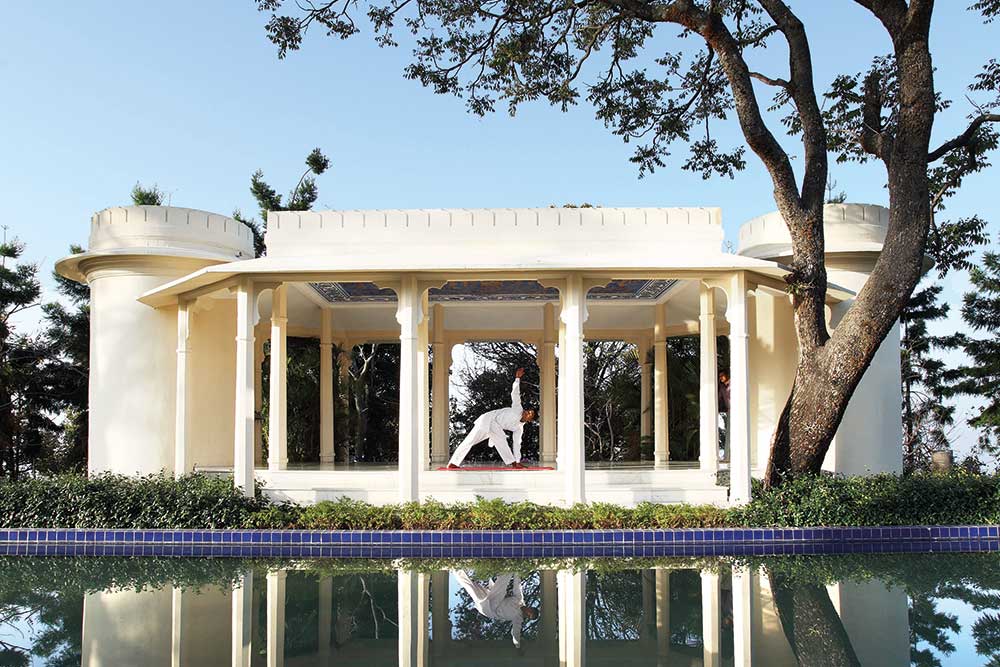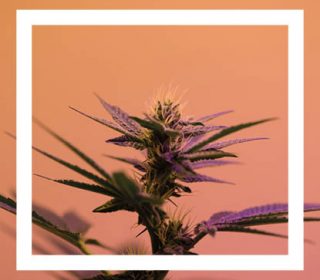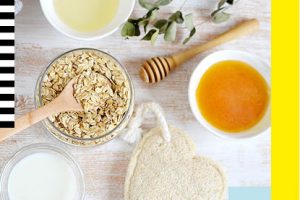Heal your body from the inside out at South Asia’s first ever luxury destination

The consultation is a bit like wellness words bingo; ‘Ayurveda’, ‘Holistic’ ‘Dosha’, ‘Vata’, ‘Pitta’, ‘Kapha’. With the promise of healing your body from the inside out, Ananda, South Asia’s first ever luxury destination (it opened in 2001), could feel more sorority than serenity. Am I about to be hazed or initiated into the new school of holistic healing?
Ananda translates as ‘a state of bliss’.
It feels apt – the entrance frames a 100-acre complex with 78 rooms, suites and villas scattered around the landscape. The spa is built into the hillside, as is the huge circular restaurant which overlooks the valley. Inside, the atmosphere is one of tranquility. Smiling, white-uniformed staff adorned me with prayer beads and welcome bows, murmuring the word, “Namaskar, I bow to the divine in you.” Clearly they’ve never met me, but I appreciated the sentiment.
After settling into my elegant marble-floored room, I go to see one of the Ayurvedic doctors on site for my opening consultation. He takes my basic details before delving into the internal and external factors affecting my health. All the wellbeing packages at Ananda follow the principles of Ayurveda, a practice belief that we are each made up of mind-body types called Doshas.
The three Doshas – Vata, Pitta, and Kapha – are derived from the five elements of fire, water, air, space and Earth (see column on opposite page, which explains what each resembles). ‘We are each made up of all three Doshas but one is always dominant, our base nature,’ the doctor explained. ‘So, if you are Pitta and are in balance, you should be 50% Pitta, 25% Vata and 25% Kapha. When these percentages change due to lifestyle factors, our bodies and minds become out of balance. Ayurveda aims to redress that balance.’
KAPHA SPECIFIC
Apparently, my dominant Dosha is Kapha, but my Pitta (more highly-strung) side is pushing it out of whack, (who knew?), so the doctor prescribes a Kapha-friendly diet including ‘warming’ foods and drinks such as oatmeal, soups, cooked salads and spicy teas. I’m advised to limit raw and cold foods, sour fruits and caffeine.
Exercise needs to include at least two intense strength and interval training sessions per week, along with daily walks post lunch or dinner. I also have to incorporate some ‘grounding’ practices, such as meditative yoga and breath work to oxygenate my nervous system and restore energy, all of which I will be taught during my stay.
Post consultation, the doctor liaises with all staff members, from the head chef to the spa manager, to ensure everything I eat and do is in accordance with his recommendations.
My mornings begin with a Kapha breakfast – buckwheat porridge to nut-flour pancakes, served with hot spiced tea and a watermelon shot designed to cleanse the palate. Even my training sessions and treatments are arranged depending on my Dosha. All I had to do was trust and let go.
BODY AND MIND
My first treatment was Abhyanga – a traditional full body massage given by two therapists using sesame oil. Abhyanga helps to liquefy toxins and normalise blood pressure.
My fitness sessions kicked off with a consultation in the gym. The personal trainer stated I have a good level of muscle but too much fat around my middle. I had three PT sessions during the week, combining cardio, weight-training and bodyweight exercises. They were fun; tough but not too tough. “Your body and mind are detoxing so we don’t want to over stress the nervous system,” my trainer explained.
To tackle poor sleep and stress levels I was given one-on-one yoga nidra classes. Listening to the soothing sound of the teacher’s voice, the ambition is to enter a state of conscious sleep. I was taught deep, nasal breathing called pranayama and advised to practise this regularly before bed. Ayurvedics believe ‘faulty’ breathing hinders vitality and pranayama aims to correct this.
In between treatments and meals there is time to enjoy many activities at Ananda, but tranquillity is equally present in just walking around and admiring the spectacular views of the mist-covered Himalayas in the distance. The stay concluded with a final doctor’s assessment where I was given a work sheet so I could continue my Ayurvedic programme at home. “How are you feeling?” he asked. “Like I’ve come back to myself,” I said.
DOSHA I.D
Each of us has a unique blueprint and one dominant dosha: Vata, Pitta or Kapha. They help us to identify how we are feeling…
VATA – A mixture of space and air found in all forms of ‘movement’. You’re quick thinking, fast moving and slim-bodied. Common signs of Vata imbalance are anxiety and dry skin.
PITTA – A mixture of fire and water found within all ‘transformation’. You’re lively, have sharp intellect and an athletic build. Imbalances include heartburn.
KAPHA – This is a mix of water and Earth and is found within ‘structure’. You have a solid frame and loving temperament. Imbalances are fatigue and low in mood.
DISCOVER HIMALAYAN CULTURE:
Ananda hovers above the town of Rishikesh, the birthplace of yoga itself. In the 1960s, Rishikesh was known as the place the Beatles visited in their quest for enlightenment with the Guru Maharishi Mahesh Yogi. Now it welcome tourists.
RAJAJI NATIONAL PARK
Just over 20km from Rishikesh, you can get a taste of safari at the Rajaji National park which houses over 500 elephants, 12 tigers, 250 panthers, spotted deer, wild boar, bears, sloths and over 400 bird species.
GANGA AARTI
Performed each evening at sundown at the Parmarth Niketan Ashram, on the banks of the Ganges, this two-hour ceremony is unforgettable. It involves saffron-robed disciples chanting, praying and lighting candles to celebrate life.
KUNJAPURI TEMPLE
Go 14km north of Ananda and the Kunjapuri temple stands 1,645 metres high with spectacular views over the Himalayas. It can be reached via a three-hour guided trek.








